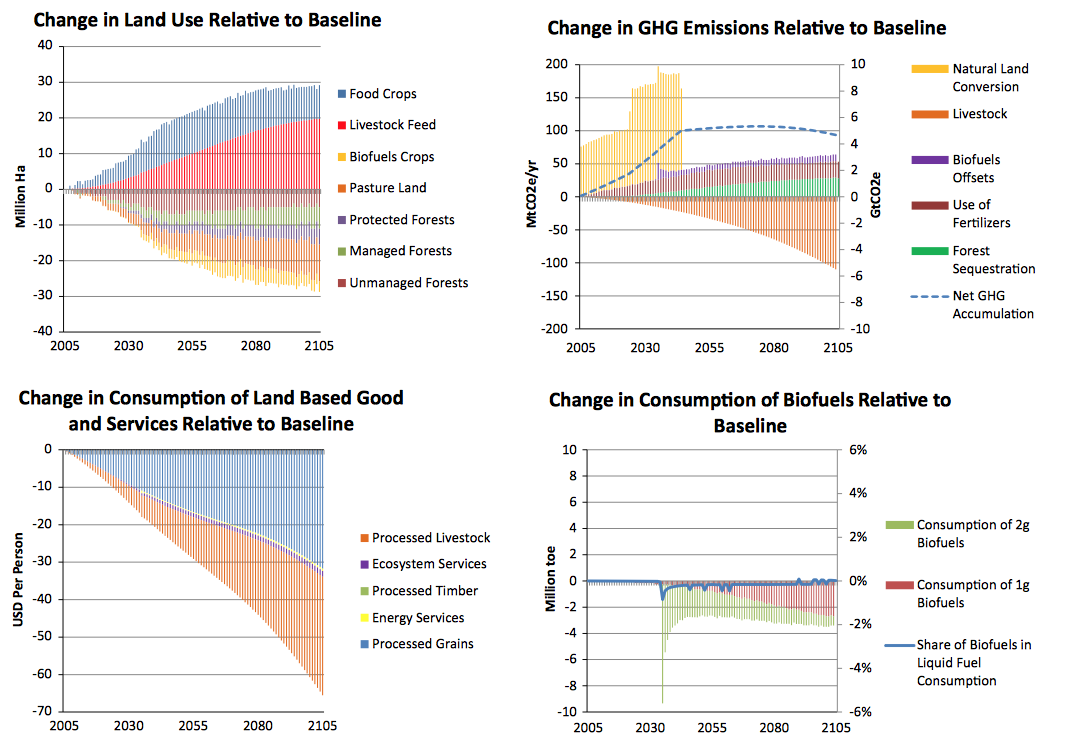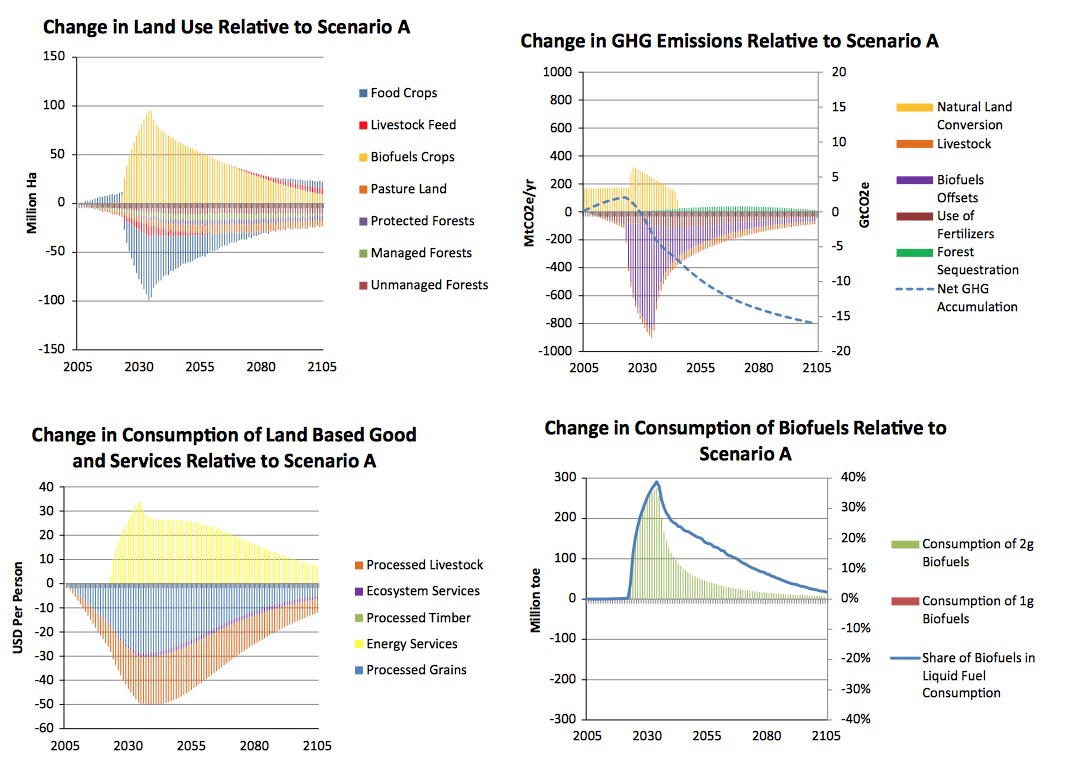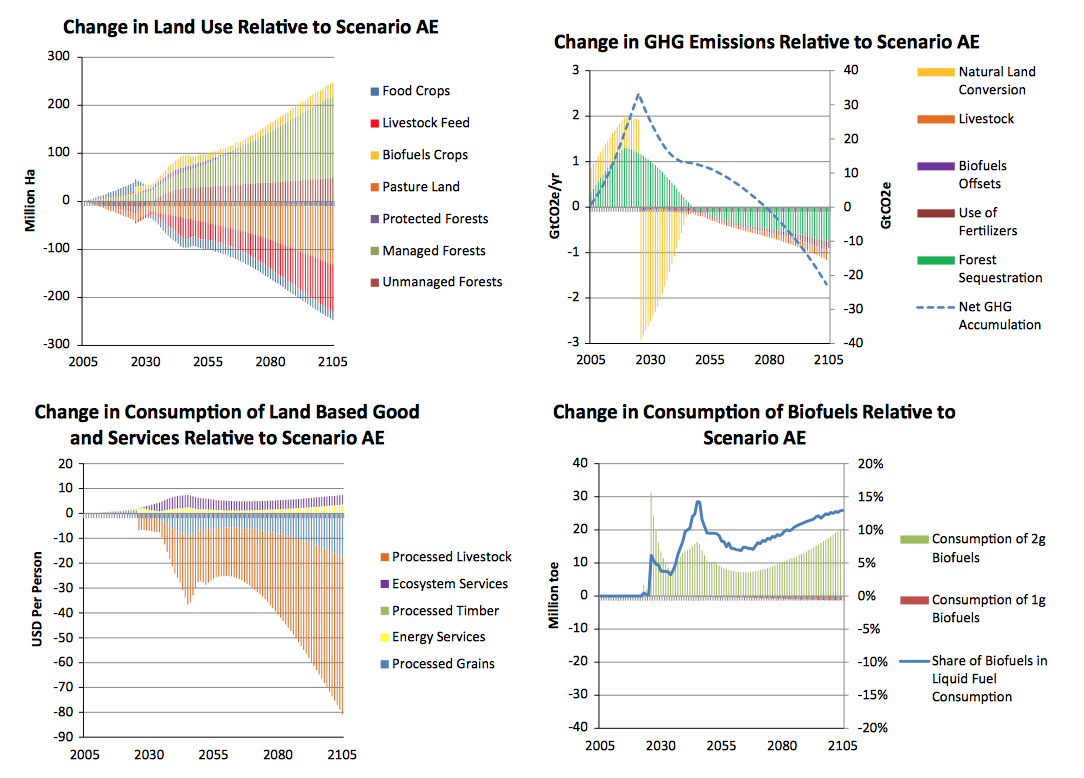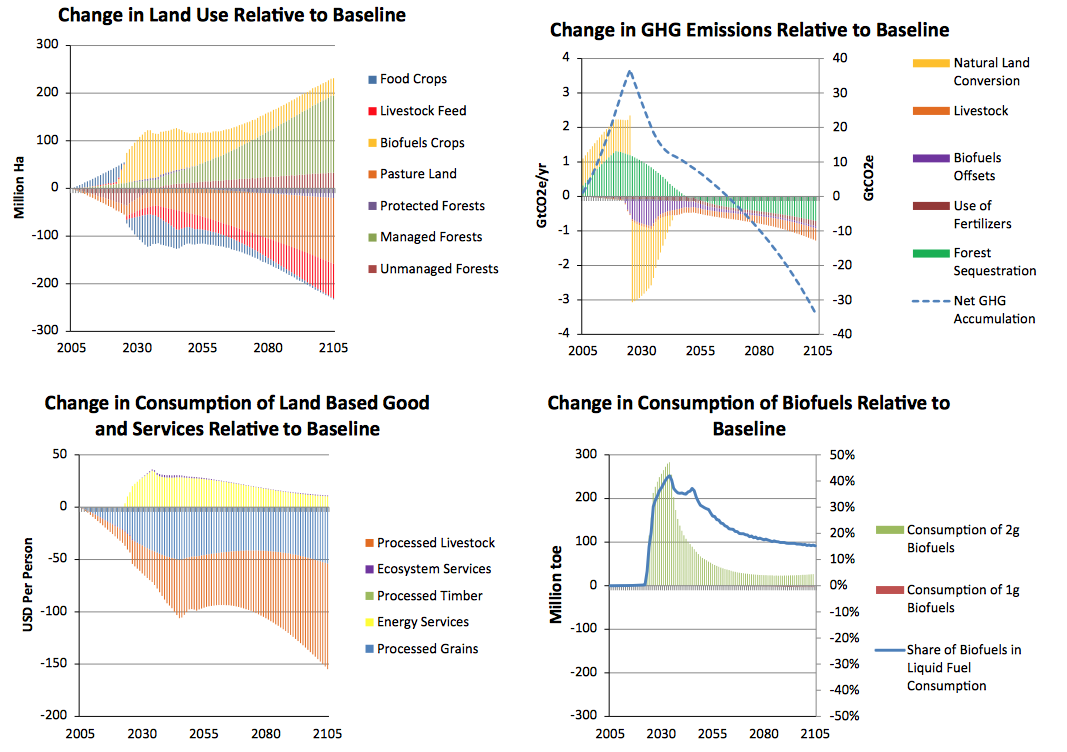Our baseline reflects developments in global land use over the 10 years that have already transpired, while also incorporating long-run projections of population, income and demand growth from a variety of international agencies. The model baseline suggests that, even in the absence of GHG regulations, deforestation rates associated with cropland expansion decline along the optimal land-use trajectory in the medium term. This is important, since deforestation accounts for a large share of current global GHG emissions. In the long term there is a significant expansion of the livestock sector, driven by increasing per capita incomes, and this is fueled by increasingly intensive production practices. The area of protected natural lands, which deliver valuable ecosystem services, also increases strongly in the long run. However, this finding is sensitive to the choice of social discount rate. A higher rate of discount results in a sacrifice of forest cover and ecosystem services in favor of more immediate delivery of services from food and energy consumption. Along the baseline, the consumption of biofuels increases rapidly after second generation biofuels become commercially viable in 2035, and provides for about a third of total liquid fuel consumption by the end of this century, along the optimal path under our baseline scenario.
We consider three counterfactual scenarios aimed at capturing the most important sources of uncertainty associated with this long run trajectory for global land use, climate impacts on agriculture, energy prices, and global GHG emissions regulations.
Adverse climate impacts on crop yields curtail food production, requiring additional cropland and encouraging additional fertilizer use, thereby leading to higher GHG emissions.
Energy prices affect the optimal deforestation rate as well as the overall amount of land used in agriculture.
By mid-century, cropland area increases sharply under higher energy prices, due to the incentive for increased biofuel production as well as higher fertilizer prices which raise the cost of intensification.
Substantially more deforestation occurs under this scenario and the increased GHG emissions from land use change outweigh the emissions fall from displacement of petroleum consumption by biofuels and declining fertilizer use.
When we also require the world’s land base to deliver land-based GHG abatement, the pressure on global natural land resources becomes even more significant.
While the introduction of the land based GHG emissions constraint leads to a significant reduction in GHG emission flows over the twentyfirst century, its effectiveness is eroded by a substantial increase in GHG emissions after the policy is announced, but before the policy is actually implemented.
This mimics the ‘green paradox’ found in other areas of environmental regulation. Since such pre- announcement seems inevitable from a political-economic perspective, it is an issue which deserves greater attention. Indeed, we find a leakage rate of 56%, which is very high and threatens to undo most of the GHG mitigation benefits of such a policy.
When all three ‘scenarios’ are simultaneously realized, the world’s land resources face a ‘perfect storm’ in which the cost of agricultural intensification is higher, biofuels expand their area, additional cropland is needed to offset the adverse impacts of climate change, and climate regulation also places new pressures on land availability for food. In this case the optimal path of food consumption is significantly lower, highlighting the potential for intense competition for land in the production of the world’s food, fuel and environmental services over the twentyfirst century.
People:
Jevgenijs Steinbuks | Thomas W. Hertel
Recent Publications:






















